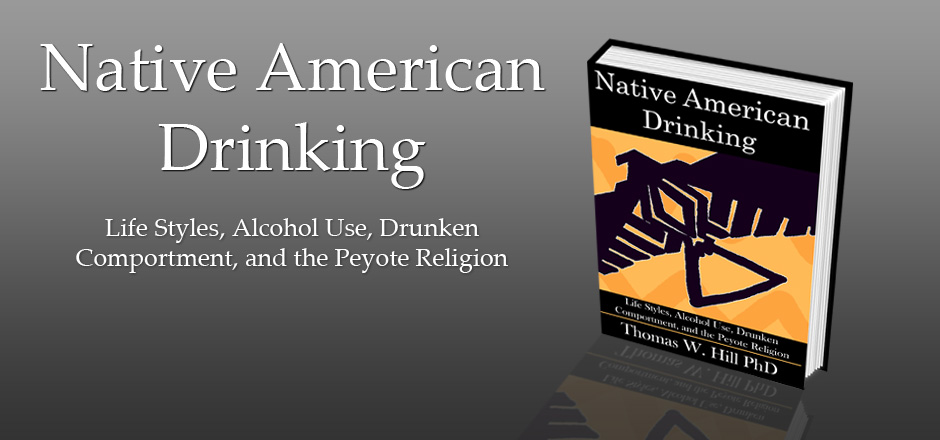 Thomas Hill’s Native American Drinking is a major contribution to the anthropology of alcohol use and abuse among Native Americans. Ethnography, ethnohistory, and biological anthropology are woven into one of the most well-rounded and comprehensive volumes on the subject. Native American Drinking compiles and revises a number of Hill’s articles on drinking behavior in the upper Midwest. Hill’s descriptions and analyses of drinking behavior among the Indians of Sioux City in the late 20th century remain the best ethnographic accounts of Native American Drinking behavior in the literature. The detailed and nuanced exploration of the varied contexts of drinking behavior add a dynamic dimension that goes beyond studies of the incidence of alcohol dependency so prevalent in the literature. The discussion of problem drinking is framed by synthesizing recent research concerning ethnic differences in the genetics of alcohol metabolism. Hill deftly situates patterns of drinking within the social and economic circumstances of individuals and traces changes in alcohol through the life cycles of individuals. Through a careful and cogent use of historical documents, informed by the insights developed in his ethnographic work, Hill demonstrates how drinking styles and patterns of alcohol use changed among the Nebraska Winnebago in response to social conditions. The historical spread of Peyotism and its role in curbing alcohol abuse are also examined. More significantly, Hill draws from this history lessons that are relevant for contemporary approaches to alcohol counseling and treatment programs. –Dr. Eric Henderson, Dean of Arts and Sciences, Northland Pioneer College
Thomas Hill’s Native American Drinking is a major contribution to the anthropology of alcohol use and abuse among Native Americans. Ethnography, ethnohistory, and biological anthropology are woven into one of the most well-rounded and comprehensive volumes on the subject. Native American Drinking compiles and revises a number of Hill’s articles on drinking behavior in the upper Midwest. Hill’s descriptions and analyses of drinking behavior among the Indians of Sioux City in the late 20th century remain the best ethnographic accounts of Native American Drinking behavior in the literature. The detailed and nuanced exploration of the varied contexts of drinking behavior add a dynamic dimension that goes beyond studies of the incidence of alcohol dependency so prevalent in the literature. The discussion of problem drinking is framed by synthesizing recent research concerning ethnic differences in the genetics of alcohol metabolism. Hill deftly situates patterns of drinking within the social and economic circumstances of individuals and traces changes in alcohol through the life cycles of individuals. Through a careful and cogent use of historical documents, informed by the insights developed in his ethnographic work, Hill demonstrates how drinking styles and patterns of alcohol use changed among the Nebraska Winnebago in response to social conditions. The historical spread of Peyotism and its role in curbing alcohol abuse are also examined. More significantly, Hill draws from this history lessons that are relevant for contemporary approaches to alcohol counseling and treatment programs. –Dr. Eric Henderson, Dean of Arts and Sciences, Northland Pioneer College
Native American Drinking is a “must read” for anyone curious or concerned about Native American Drinking. The book is comprehensive and carefully researched. It is geared toward both academic audiences and the wider public. By virtue of the topic and the breadth of complicated and often contentious issues encompassed in the book, Native American Drinking will likely spark lively discussion and debate. A particular strength of the volume derives from (1) its thorough coverage of studies conducted by a broad array of different scholars with respect to Native American Drinking and (2) considerable and rich data collected by Hill … among Native Americans in Sioux City, Iowa, with respect to their drinking histories and drinking impact. English language publications on the topic are thoroughly referenced.
In Hill’s field work, Native Americans most heavily represented are from the Santee and Winnebago tribal groups living in Sioux City, Iowa. He conducted in-depth research with a restricted number of Native Americans as a means to better understand their complex life histories revolving around alcohol beverage consumption and related problems. Data were compiled from different agency records; from a wide range of written documents; from direct observation of events; through participation in various activities; [and] via various interview formats (formal, informal, focused)…. Hill’s decision to draw upon such a broad array of research methods and to focus on in-depth study of a limited sample derives, in part, from his prior training experience in a research and psychiatry program at the University of Washington, where he worked with mentors anthropologist James Spradley and psychiatrist Mansell Patterson…. The core of the book focuses on rich data that Hill collected among the Sioux City Indians…. Through stories related by the Native Americans, he provides a comprehensive picture of drinking patterns and life styles of urban Indians (chapter 4); changes over the life cycle with regard to “drinking norms and constraints” (chapter 5); “drunken comportment” as evidenced among the Sioux City Native Americans (chapter 6); issues regarding “problem drinking” (chapter 7); a focused ethnohistorical treatment of the Nebraska Winnebago (chapter 8); a very compelling portrayal of the application of the Peyote religion for Native American therapeutic treatment of drinking-related problems (chapter 9); and insights Hill gained in this research regarding heavy drinking, diversity of drinking patterns within societies, and alternative perspectives to understanding these issues better (chapter 10).
Hill addresses ethnic/racial differences in alcohol metabolism in a section of the chapter on problem drinking. It is worth reiterating here, his conclusion regarding the data on genetic variation and problem drinking among Native Americans: “no biological characteristics unique to North American Indians have been established that indicate they are at any greater risk of becoming problem drinkers than are Caucasian Americans.” –Dr. Linda Bennett, Professor of Anthropology and Associate Dean, U of Memphis
In Native American Drinking Hill contemporizes his earlier ethnographic and ethnohistorical conclusions by exhaustively applying to and evaluating the impact and significance of relevant sociopsychological, pharmacological, and dependence intervention studies published subsequent to the publication of his field work findings. His summarization and integration of succeeding research findings in the substance use literature is blessedly coherent due in large part, I suggest, to Hill’s excellent writing and teaching skills honed in a long career as a researcher and educator.
Powerfully and persuasively written, Hill’s research findings and individual and topically focused publications of the 1970’s are presented, once again, as a book compendium that has as its themes, descriptions, analyses and theories of Native American Drinking behaviors. I have pluralized each theme as it is Hill’s intent to underscore the complexity and multidimensional nature of the interactions between individual history, personality development, family culture, social networks, and societal norms. Hill asserts that any attempt to describe a society’s attitude about any behavior and especially drinking is doomed to caricature if not all of the relevant psychosocial factors that shape the focal behavior are examined and accounted for in the research process and findings….
As an ethnographer, it was Hill’s consultants’ understandings of their and their fellow community members’ lifestyle decisions, the social categories they inhabited at any one time over a lifetime, especially as they pertained to their drinking styles that most impressed me. The detail and honesty of Hill’s “consultants’” descriptions of the behaviors of their community members, significant others and themselves are “cannot put down reading”. I found myself envious of Hill’s obvious ability to establish and maintain rapport with and, yes, even the complete trust his “consultants” had placed in the young researcher to get it right and not do harm. Students interested in accomplishing ethnographic fieldwork focused on a sensitive and potentially stigmatizing topic would do well to read this exemplary text and then contact Dr. Hill to find out just how such rapport and trust gets established. –Dr. Joan Weibel-Orlando, Associate Professor Emerita, University of Southern California. Author, Indian Country, L.A.






[…] Hill ’66, an emeritus professor of anthropology at the University of Northern Iowa, has written Native American Drinking: Life Styles, Alcohol Use, Drunken Comportment, and the Peyote Religion (New University Press): a […]